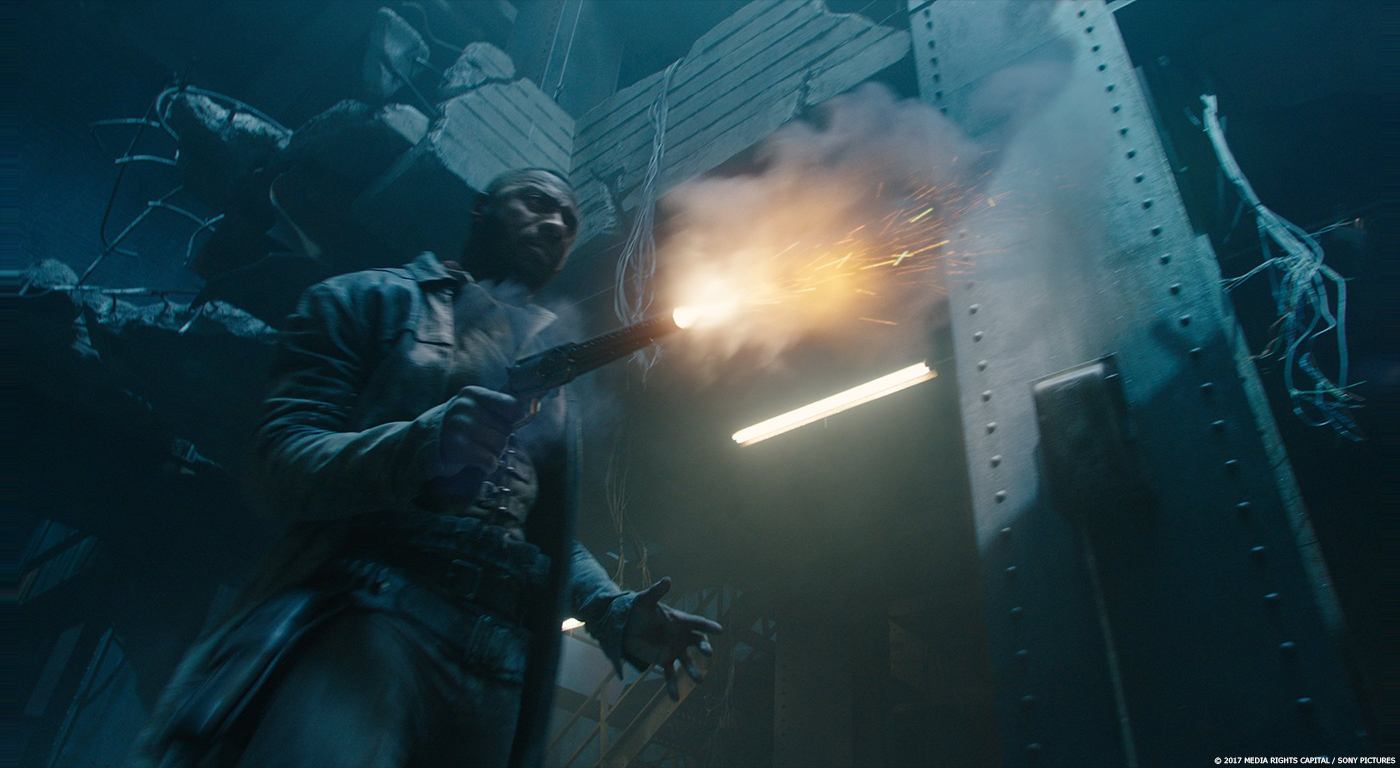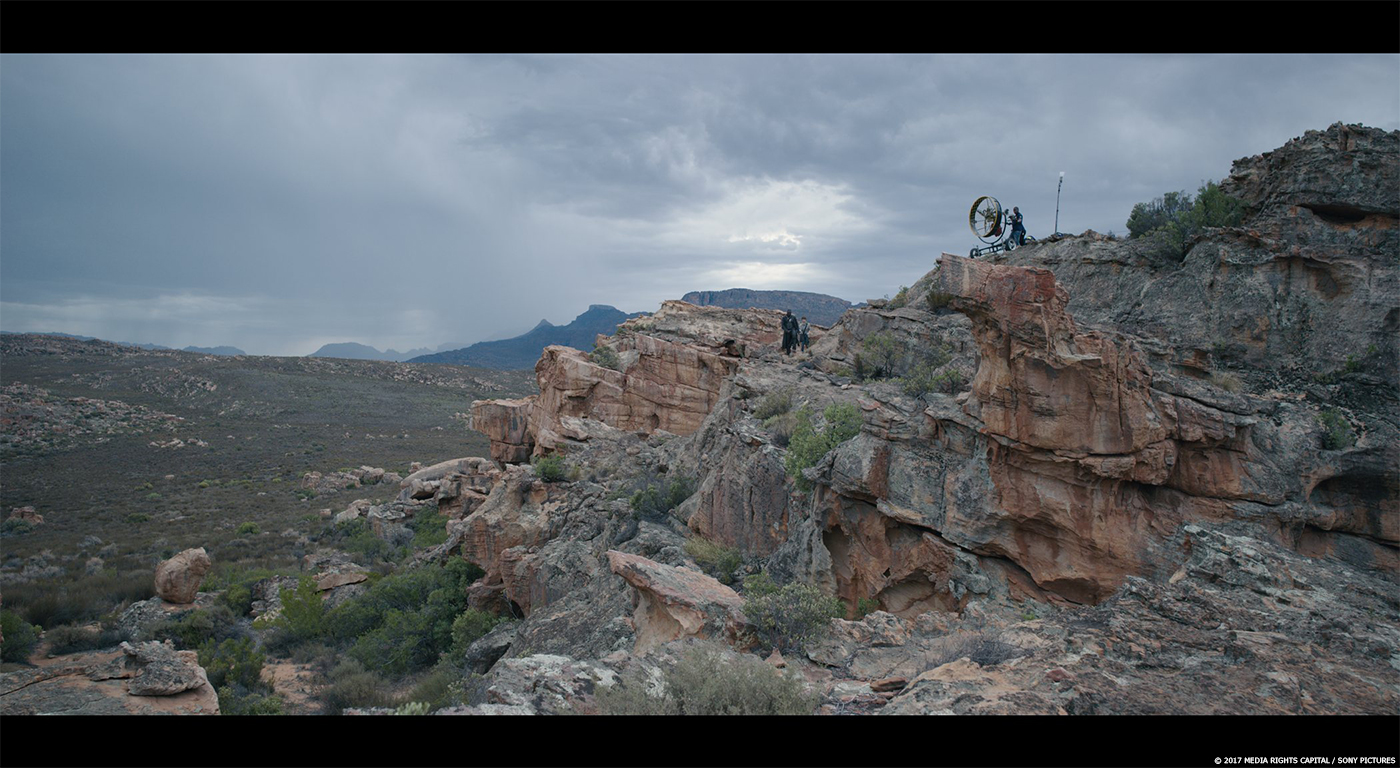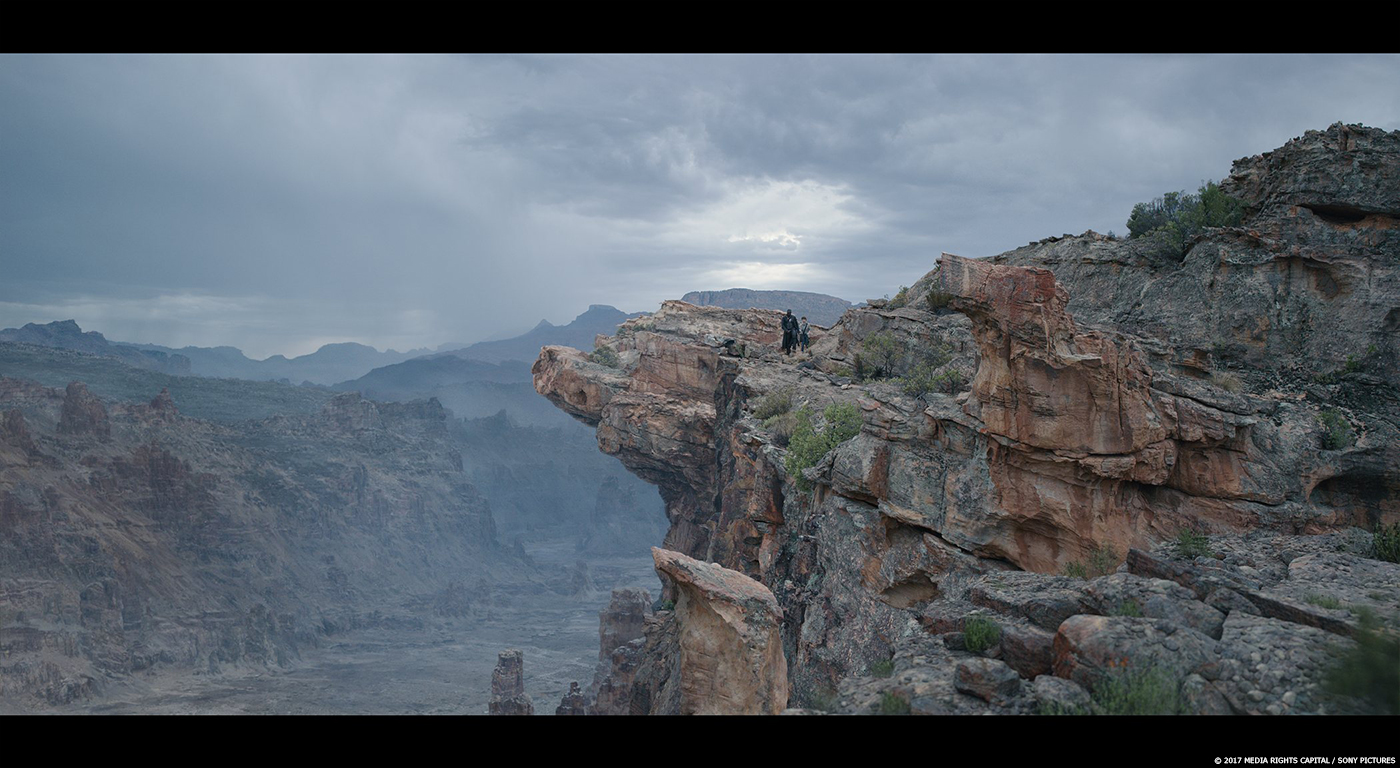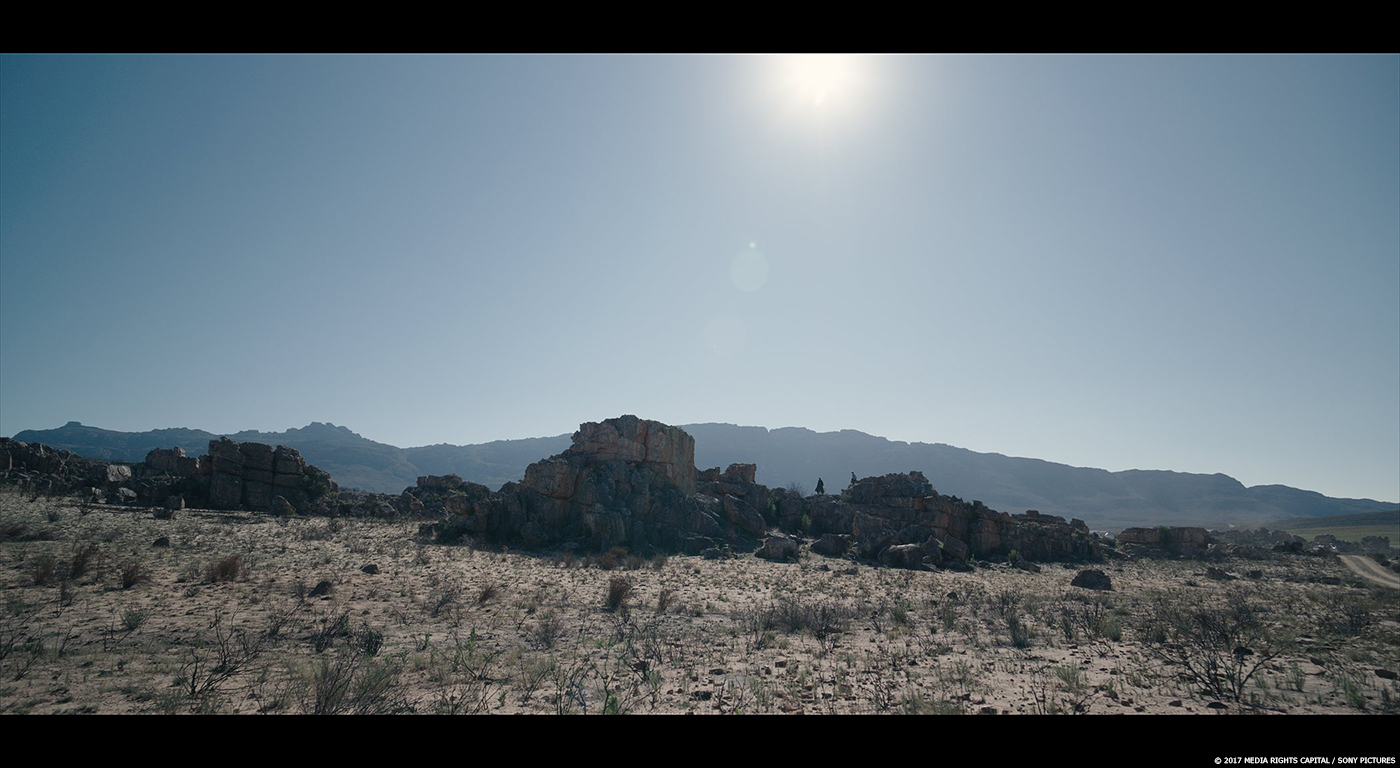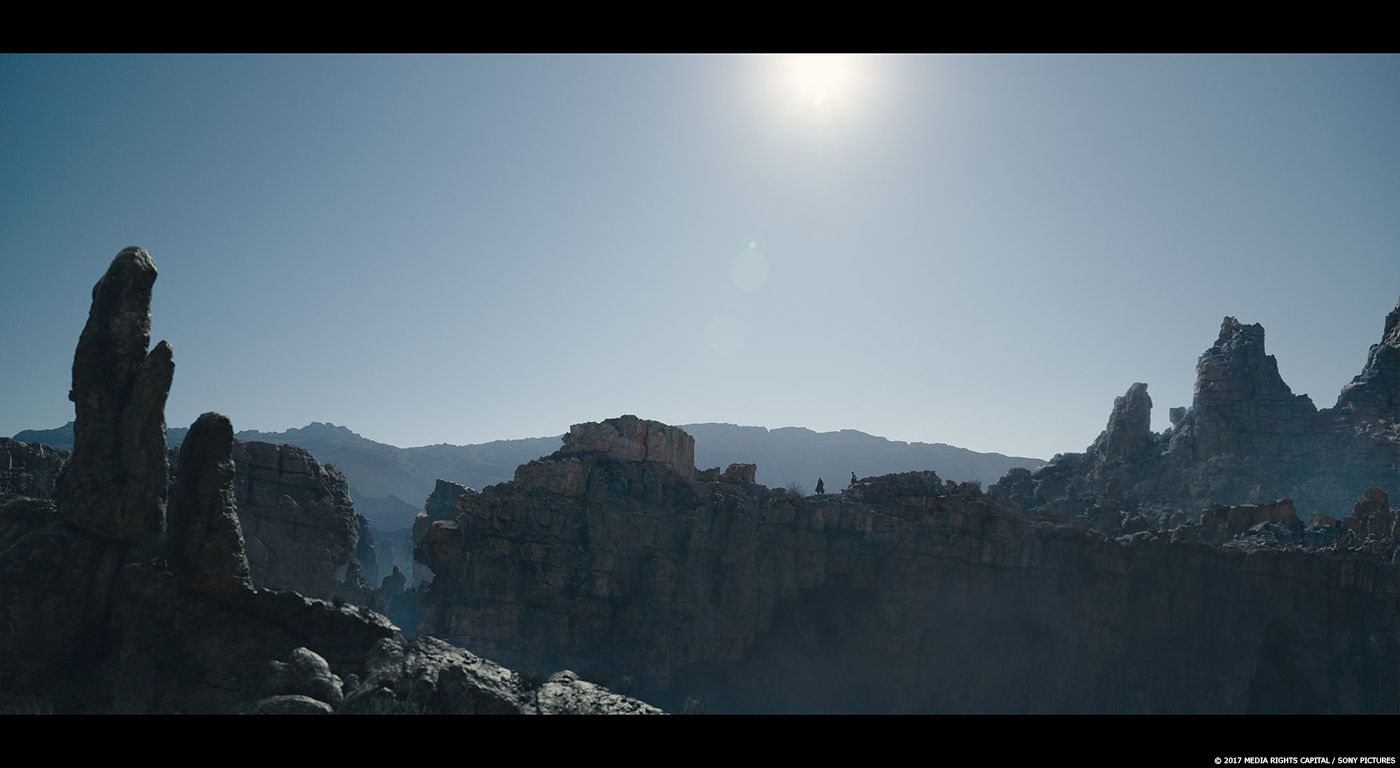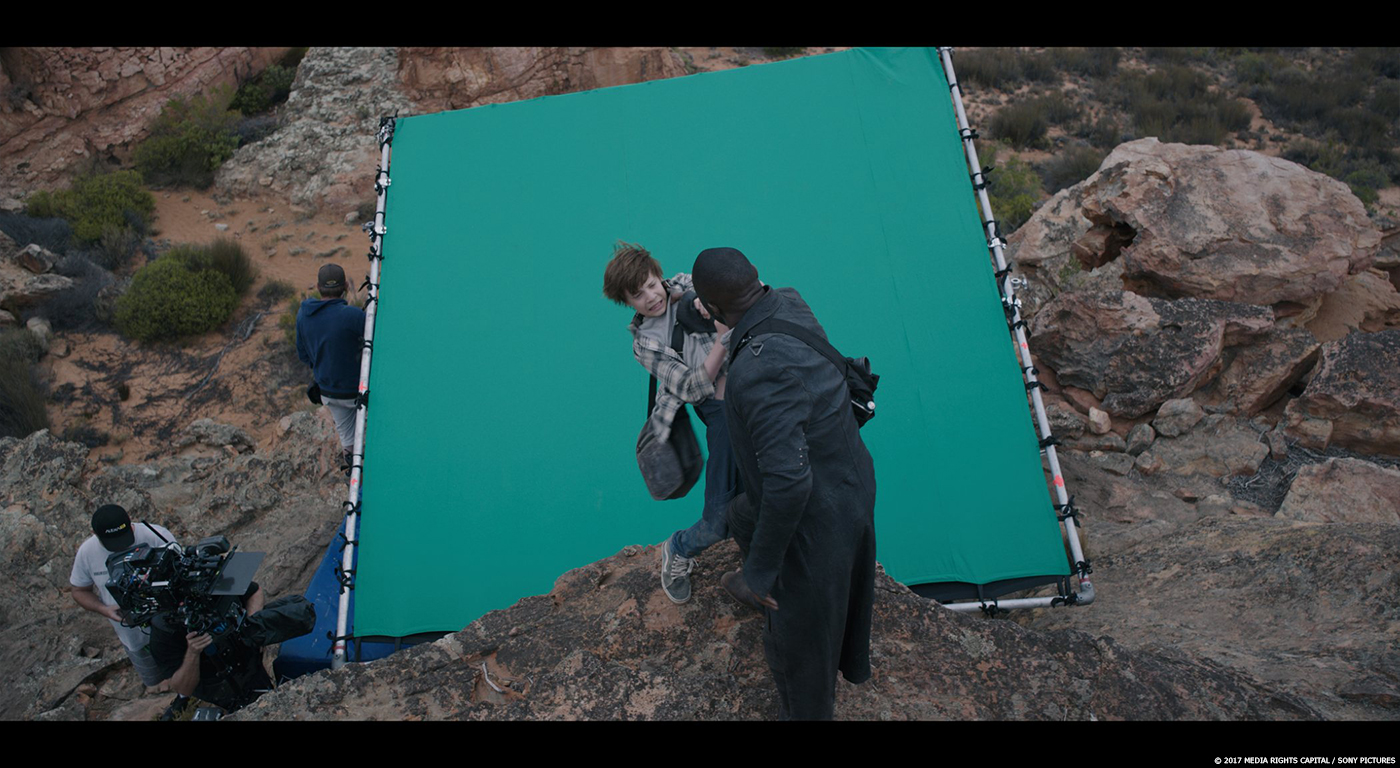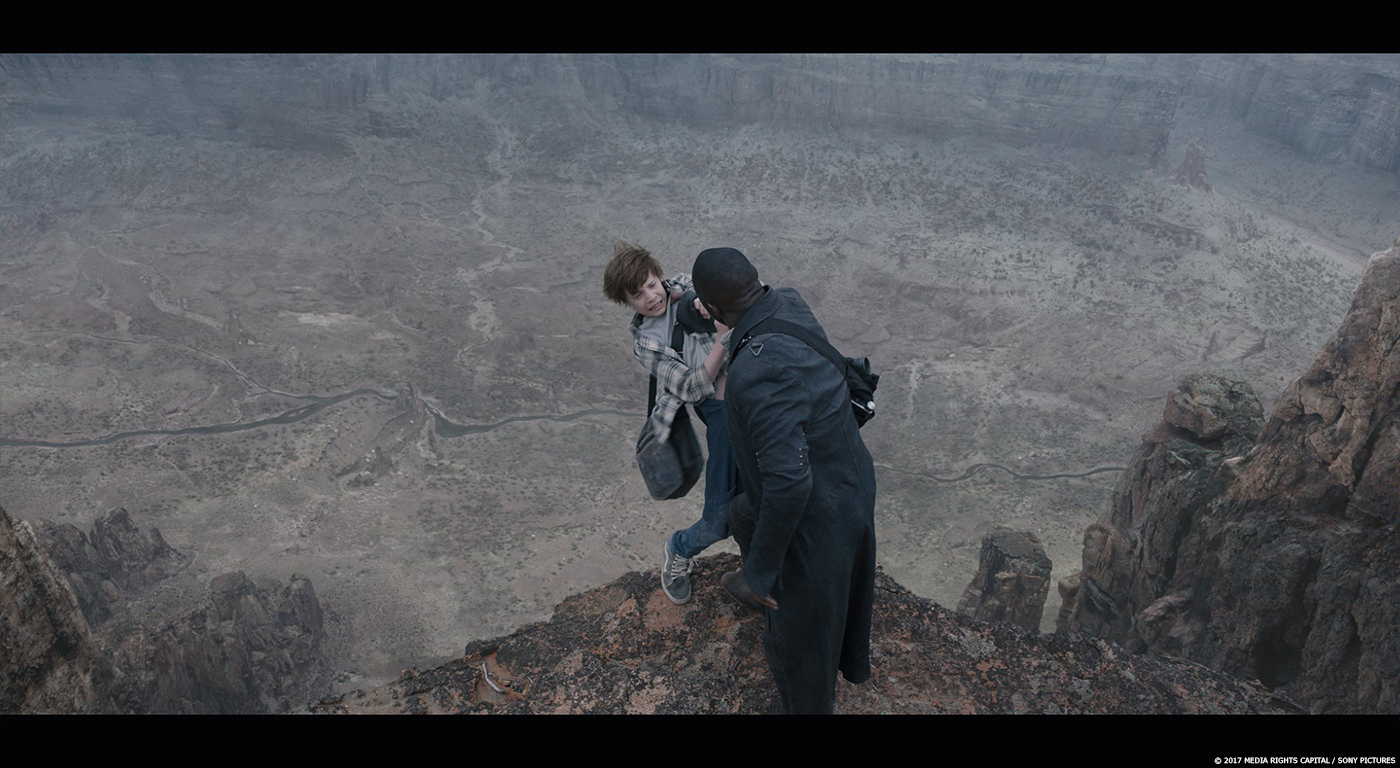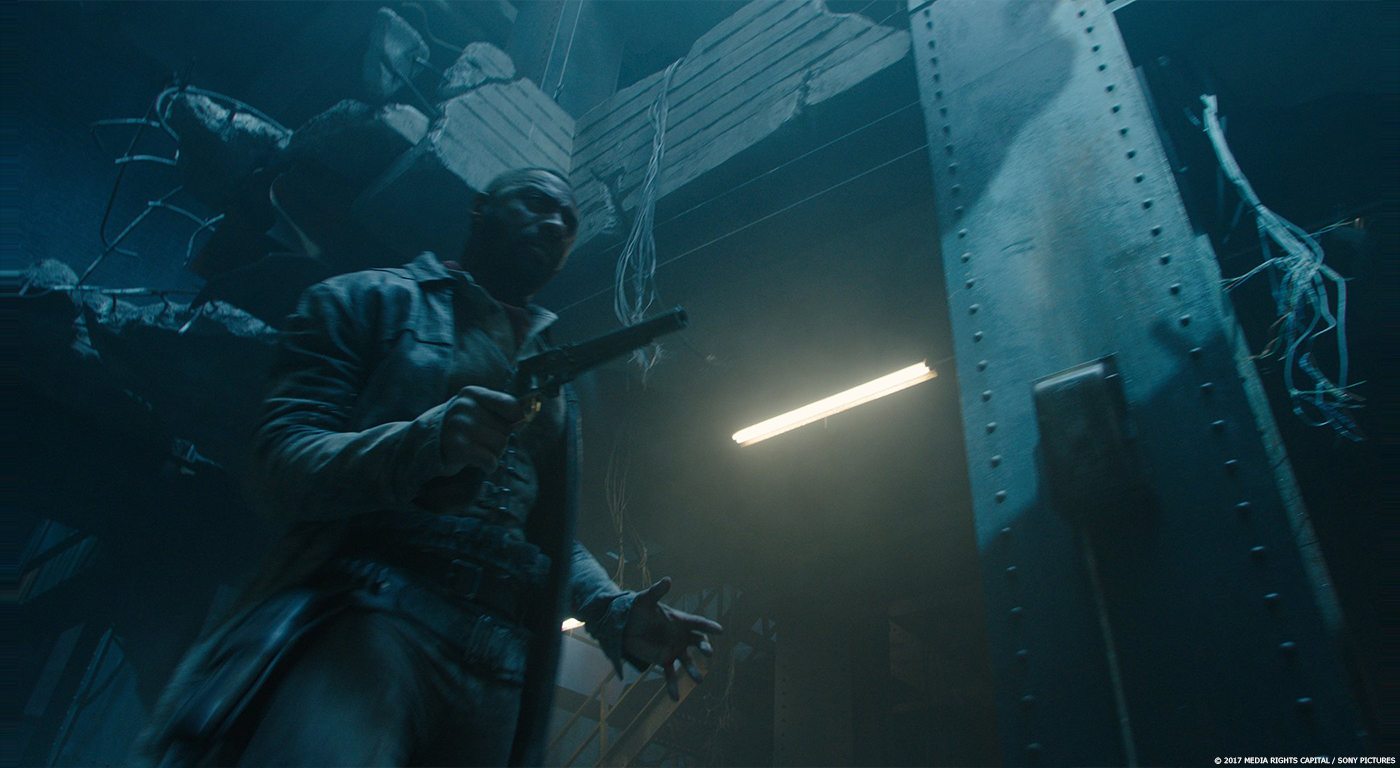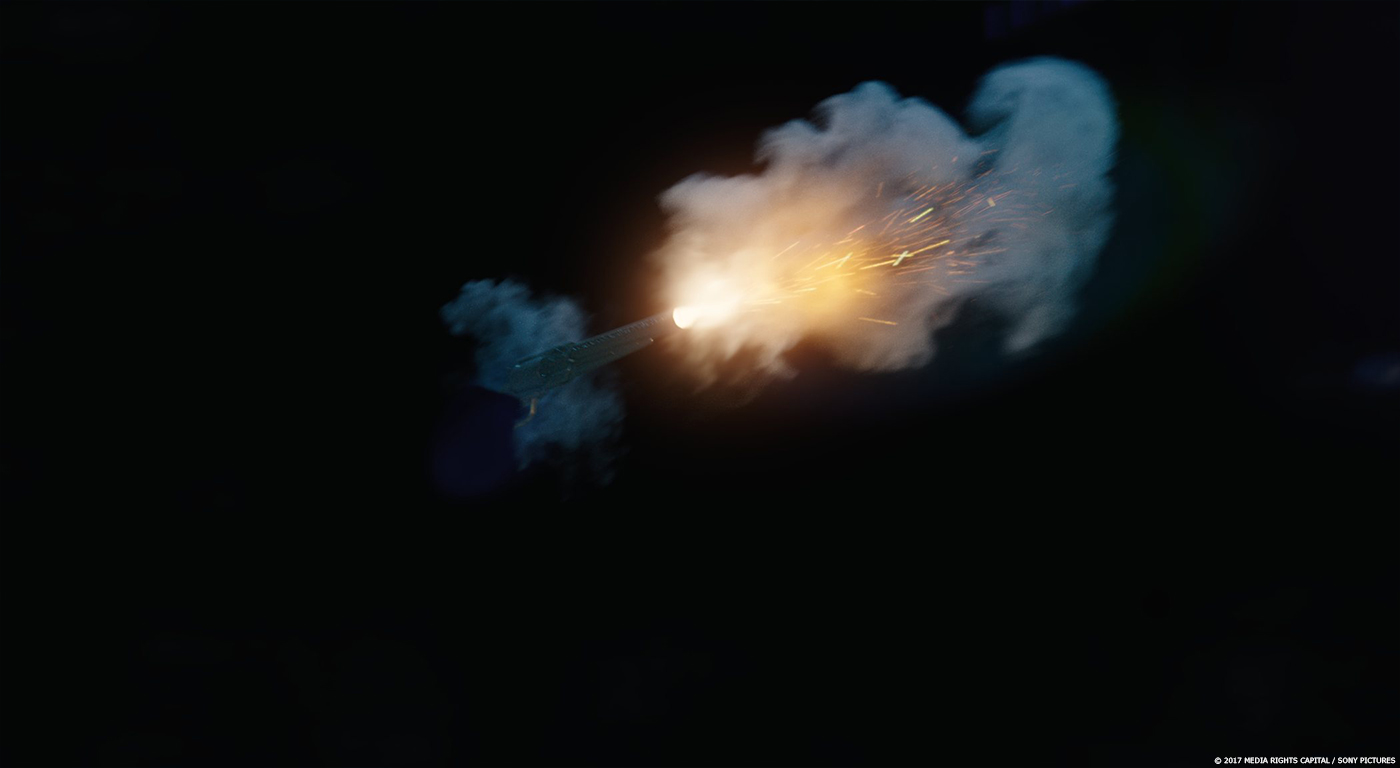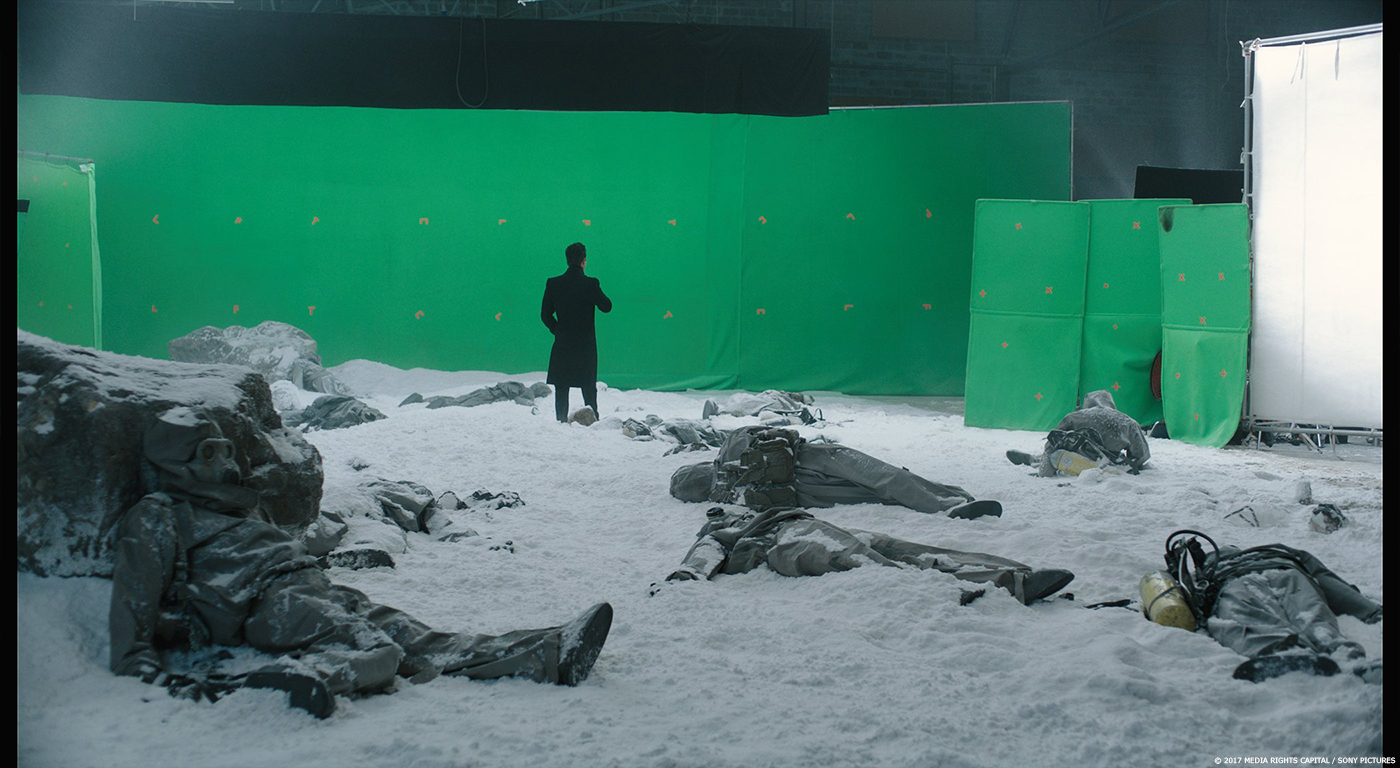At the end of last year, Florian Gellinger had explained the work of RISE on DOCTOR STRANGE. He talks to us today about his work on THE DARK TOWER, the adaptation of Stephen King’s book.
How was the collaboration with director Nikolaj Arcel and VFX Supervisor Nicolas Aithadi?
We could tell from the very first day that Nikolaj and Nicolas had been discussing every aspect of the film for quite some time. That should prove to be absolutely correct, seeing how Nicolas directed us perfectly down the path that ended with Nikolaj loving our work. There was hardly any shot that came back to us from a director’s review with more than a slight correction to be made. That meant for us that we could focus on finessing every little aspect up to the very end rather than constantly changing direction. It was brilliant to meet them and to get to work with them.
What was their approaches and expectations about the visual effects?
They were both facing the challenge that the expectations from the fans of the Stephen King novels were extremely high. Every bit of design work, be it environments or FX, needed to be close to the source material but also work as a photo real part of a feature film. That being said – making something work that features a Gunslinger travelling dimensions and defying all genres is as hard as it gets for a filmmaker.
What are the sequences made by RISE?
We worked on a pretty large variety of sequences starting with the environments after Jake meets Roland for the first time. We also did a lot of the work for the gunfight in the Dixie Pig as well an Icy Planet environment and bits and pieces of the final fight between Roland and Walter, the man in black.
How did you organize the work at RISE?
When we started talking with Nicolas about working on THE DARK TOWER, our team in Berlin began with some layouts for a temp screening. The show soon shaped up to become something much bigger and we shifted most of the work to our facility in Stuttgart with the more complex FX work staying in Berlin. I was lucky to have our best compositing supervisors Jonathan Weber and Oliver Hohn in Berlin and Nicolas Leu and Benjamin Burr in Stuttgart on the show. Oliver Schulz, my CG supervisor, and Andreas Giesen, our FX supervisor, had already worked with me on CAPTAIN AMERICA – CIVIL WAR and helped in setting up the show properly from the start. We tried to package up as much as possible into assets that everyone could work with, no matter where they were located.
Can you explain in details about the landscape creation?
The sequence where Jake finds Roland was shot in South Africa and the rock formations were already a sight to behold – but they needed to be exaggerated while still remaining perfectly believable to sell the environment as a distant place in another dimension. We used the LiDAR 3D scans from the original location, cleaned and textured them and used these assets to build something much more dramatic. By starting with something that already existed in the filmed plate and rearranging it as desired made sure that it merged seamlessly with the rest of the scenery. From there we turned the rocks into a matte painting that was re-projected onto a proxy geometry of our original scene asset.
What references and indications did you received for the environment?
Pretty much all the reference we needed was right there in front of us. The brief was to alter the landscape to make it look more dramatic and to make the bit with Jake hanging over the cliff look much more dangerous while still selling it as a location that was 100 percent real.
Did you share assets with MPC?
Yes, we did receive Roland’s guns as a 3D asset including textures from MPC and they also shared the LiDAR 3D scan of the Dixie Pig set with us.
The Gunslinger have a big fight at the Dixie Pig. How did you enhanced this location?
The set was already very big the way it was. But every stage has it’s limitations, especially in height. We did have to add the upper floors every now and then when looking into the courtyard. Other than that it worked perfectly as is.
A lot happens during this fight. What was the most complicated thing to enhanced and why?
Our main task was to make the gunfight more dramatic by giving Roland a highly art-directed muzzle flashes for his iconic guns and to add bullet hits to walls and to the evil goons attacking him. Starting with the muzzle flash we took MPC’s gun asset, made it work in our Houdini pipeline and turned it into a gun that actually works the same way as a real gun would: We animated Roland’s finger to pull the trigger, the trigger would lift the hammer causing the cylinder to rotate, the hammer to hit and the muzzle flash to be generated as a pyro simulation. The pyro sim was something quite elaborate To make it easier and to streamline the process we created a pre-cashed muzzle flash Pyro simulations as a library for artists to choose from. All the ended up doing was pick the wind direction for the smoke to dissolve, a shape for the muzzle flash and pull the trigger.
There were still tons of shots where we had to re-sim the muzzle flash as hero simulations – but our approach worked for most shots straight out of the box and if it didn’t it also told us what we needed to do differently. If we needed to add a CG cylinder to the gun in the plate – we just rendered it out with the muzzle flash. If Roland should shoot at a different moment in time we also rendered his finger and part of his hand to be replaced. It gave us ultimate flexibility on what to add or to swap because it was all there all the time. The bullet hits were created using rigid body sims with fluid sims for the smoke and dust coming off of them. Since we had the Dixie Pig as a scan we started texturing and shading various bits where the gunfight would take place. That way we could just start with destroying everything in the room and making sure that continuity worked for the sequence. Here and there we also added bullet hits to the evil hordes attacking including some blood coming off. We couldn’t go berserk with that, though because of the desired rating for the movie.
Let’s talk about the big final fight between The Man in Black and The Gunslinger. How did you created the various FX that happens during this fight?
The team in Stuttgart was able to take all the assets including the muzzle flash library from the Dixie Pig bar fight and use them here, too. Starting with the LiDAR scan of the final fight location we started blocking bullet hits, tracked the CG guns into Roland’s hands and let the mayhem take place.
The Gunslinger reloads his guns in a great and cool way. Can you tell us more about it?
There is actually more than one cool way that he uses to reload his gun. He either pushes the individual bullets from his belt into the cylinder as it spins, the cylinder of his gun over his belt causing it to rotate while he reloads, an entire moon clip into his gun directly from his belt or, and this is probably the coolest, he throws two moon clips into the air, catches them with his guns’ cylinders open and continues firing. As you might have guessed, most of the guns and all of the bullets or clips in these tricks are CG. Surprise! But he’s still super badass, no matter if CG or real.
Was there a shot or a sequence that prevented you from sleep?
Not really. We had one matte painting that was a bit annoying because it kept dragging on for very long. But as long as even the most annoying shot is making progress, there is not really anything to complain about.
What was the main challenge on this show and how did you achieve it?
The gunfights needed to look as believable like they came straight from an old-school western – without using the practical muzzle flashes, squib hits and explosives. The environments needed to look 100% grounded in reality – and still out of this world. Pretty complicated when you hear it – but also pretty straight forward as long as you cling to your reference footage and stay on course.
What is your best memory on this show?
Nicolas, Cari, Holly, Stephen, Diane and Brian on production side were amazing to work with. There was never a day were we didn’t look forward picking up the phone and chatting about shots and sequences.
How long have you worked on this show?
We had a little break after the temp delivery – so I’d say 4 months total.
What’s the VFX shots count?
I think we were at roughly 120-130 shots total.
What was the size of your team?
60 people including production.
What is your next project?
I’m working as VFX producer on BLACK PANTHER for Marvel.
A big thanks for your time.
// WANT TO KNOW MORE?
RISE: Official website of RISE.
© Vincent Frei – The Art of VFX – 2017


